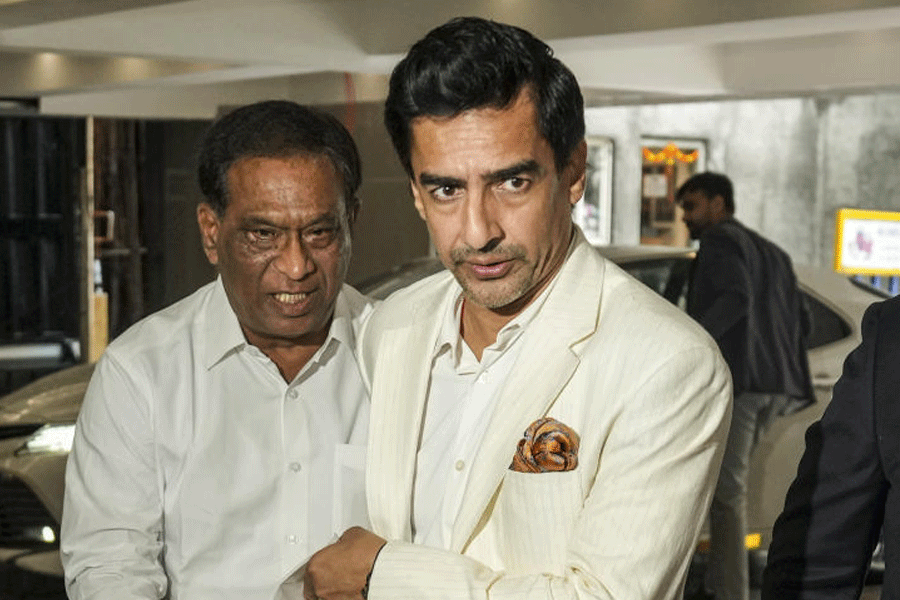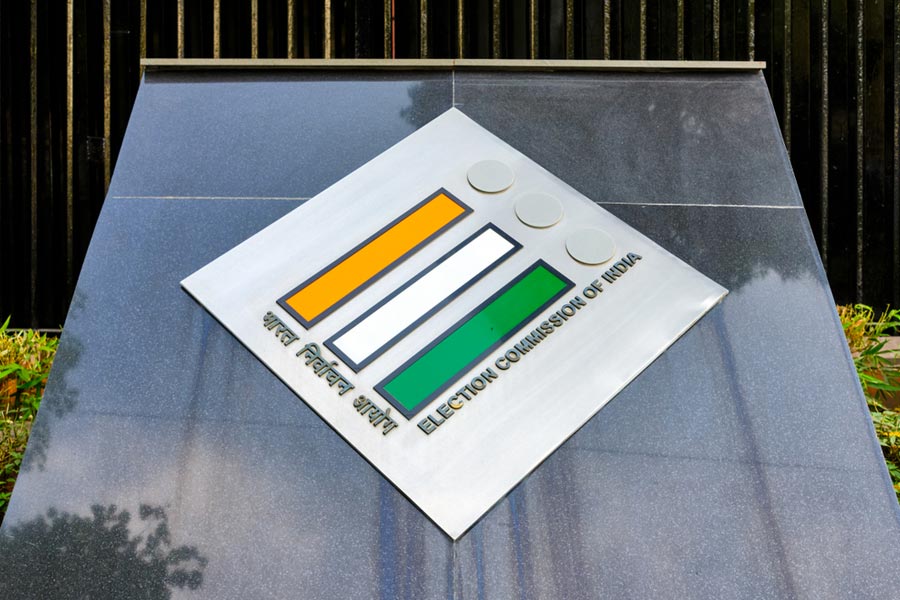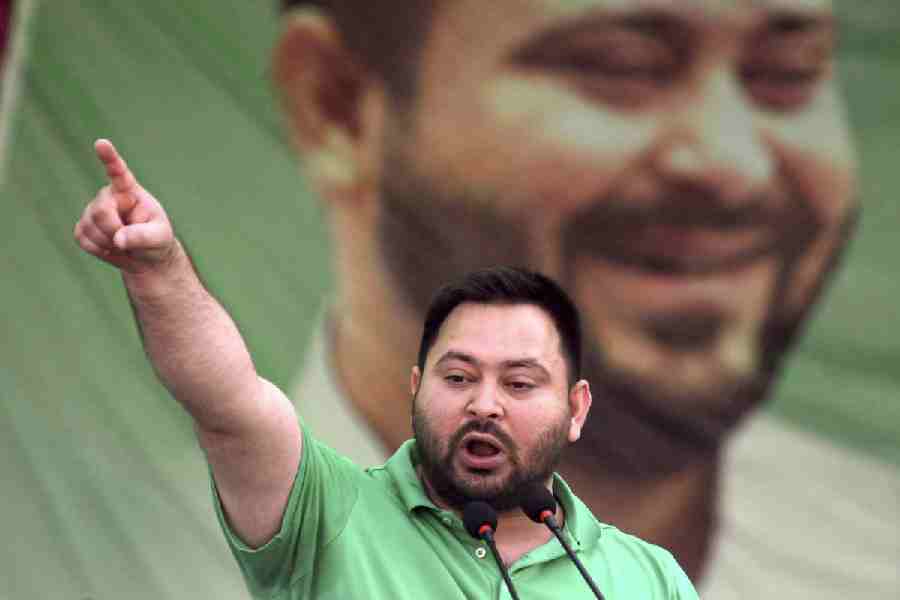 |
Kamala is walking down the garden path, smelling the roses. Now she is above the ground, floating with the white clouds. She is on top of a mountain…
Kamala Venkatesh (named changed) is being hypnotised. The 40-something Bangalore housewife has a festering ulcer on her left leg. Her physician, Baroda plastic surgeon Bhaskar Vyas, advises her to get her leg amputated. But after 10 hour-long sessions of hypnotherapy with Vyas spread over six weeks in September and October, Kamala insists she has been cured. She believes the feeling of relaxation in a hypnosis-induced trance helped her.
Doctors are slowly turning to hypnotherapy to treat their patients. Not just for psychiatric problems such as phobia, depression and schizophrenia, but for a host of other ailments, including infertility and heart problems.
At Baroda’s Maharaja Sayajirao University, a year-long diploma course in clinical hypnotherapy, which started in 2000, has been attracting doctors, clinical psychologists, physiotherapists and occupational therapists. In Mumbai, hypnosis trainer Shekhar Kunte says he’s seen a spurt in the number of doctors learning hypnosis: up from nine students in 2006 to 13 this year.
Hypnotherapy, its proponents hold, creates a link between the conscious and the subconscious mind. Patients are put into a trance — with the help of dim lights and story telling — and made to relax. “It helps heart patients who invariably have an emotional issue at the root of their illness,” says Dr Achala Singhal, head of cardiology, Himalayan Institute of Medical Sciences, Dehradun, who uses hypnotherapy to treat her patients.
The argument goes that the subconscious is less critical and analytical than the conscious — and therefore more receptive. In a trance, the subject gets insights into matters that could be behind an illness or a fear. So the patient is more open to the suggestions of therapists, who try to undo what they call negative thought patterns or fears.
Baroda gynaecologist Rajni Vyas says that hypnotherapy has yielded encouraging results in treating infertility. She puts a woman with ovulation-related disorders in a trance and asks her to imagine a flowerbush and the various stages of a fruit. The buds, flowers and fruits are metaphors, used to correct hurts buried in the unconscious.
Dr Anshu Kumar, a general practitioner in Noida who has been using hypnotherapy for the last four years, says she started the practice because she wanted to “know more about the mind.” In Baroda, paediatrician Radha Mohan says 18 of the 25 children she sees every day undergo “indirect hypnotherapy” — by which she creates a rapport with the patient.
These days, Dr Mohan advocates bedtime stories, which, she holds, can cure a child of an allergy or a stammer. “The time just before falling asleep and waking up are natural hypnotic states,” she says. So any story told at that time, she argues, percolates to the subconscious, thus driving home the message.
A young patient who had rashes was told a story about Santa Claus applying gel on his skin. The story worked, says Dr Mohan, but had to be repeated for better results.
Hypnosis is slowly also regaining favour with anaesthetists. “Hypnoanaesthesia is so much nicer for the patient,” says Dr Bhaskar Vyas, who hypnotises patients while dressing wounds. In addition to alleviating patients’ stress and pain, he says it improves blood circulation and the acceptance of skin grafts.
Dr Rupa Chandrashekhar, an anaesthetist in Baroda who also uses hypnotherapy, however finds that it has its limitations. “Most doctors prefer anaesthesia to hypnoanaesthesia, as it takes just about three minutes in the former, while the latter could take up to an hour at a stretch,” she says. But hypnoanaesthesia combined with anaesthesia means a lower dose of anaesthesia for a patient. For instance, she says, the stipulated dosage of 8-10 cc of sodium pentathol for an abortion could be reduced to 6cc if accompanied by an hour’s session of hypnoanaesthesia.
A typical session of hypnotherapy can last from 30 minutes to an hour and cost between Rs 300 and Rs 2,000, depending on the city and the expertise of the practitioner. Before a patient is put into a trance, the required homework is done through an hour of case history “to know where the shoe pinches,” says Dr Rajni Vyas. “But if results don’t show up by the eighth session, it is unlikely to benefit the subject.”
In fact, it is this time factor that most doctors consider a disadvantage. In Mumbai, Dr Ashit Seth, who claims to have used hypnotherapy over most of his 30-year-long psychiatric practice, says he’s now given up using hypnotherapy in its pure form. “It’s too time consuming.”
Hypnotherapy may be the new kid on the medical bock, but it is still to be widely accepted. Even Dr Mohan was initially wary and took six months to be convinced that the therapy had its uses. “I began as a sceptic, constantly looking for evidence,” she says.
“Unlike drugs which are tried and tested, hypnotherapy lacks standardisation in terms of technique and time of treatment,” says Dr Ashok Bandyopadhyay, chief cardiac surgeon, Peerless Hospital, Calcutta.
There is room for misinterpretation too. Delhi psychiatrist Nitin Shukla says hypnotherapy can open up a Pandora’s box, and needs a competent therapist and follow-up counselling sessions. “But not all doctors are good at counselling. At medical school, we’re not taught to be nice and listen to the patient,” he says. “There are many therapists who promise more than they can handle.”
While medical men have been trying their hand at hypnosis, there are many who still fight shy of admitting to using it in their practice as the field does not enjoy widespread recognition, says Dr Yogesh Chowdhary, a hypnosis trainer in Delhi. Some disguise it as a meditation or relaxation exercise. “People fear hypnosis — thanks to stage shows where hypnotists make a mockery of subjects,” says Dr Shukla.
Still, a section of doctors likes to stress that hypnotherapy is safe. Dr Shukla, however, adds a caveat to that. “It’s as safe as a vitamin B pill, which can also cause a reaction in a patient.” And Dr Seth advises caution, too. “Hypnosis is like a surgical tool,” he says. “It can murder or save.”










